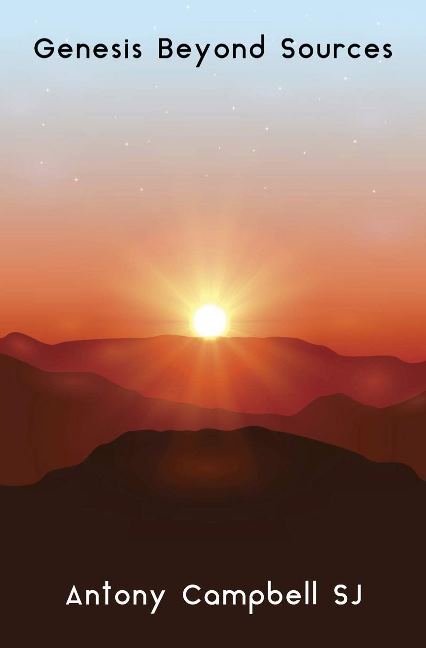Genesis Beyond Sources is a radical and groundbreaking book with a new approach to understanding the book of Genesis and the Pentateuch. It has two components. The first touches the whole of Genesis and affects much of biblical narrative text. The second is more scattered and comprises the major observations stemming from close work on Genesis and broader study of parts of the Pentateuch.The first component is a new approach to understanding Genesis that sets on its head the basic academic picture of the last few centuries. It is the first large scale alternative in English since source-critical analysis began. Its primary proposal is that the Bible text we have reflects not the END PRODUCT of the storytelling process but rather the BASE FROM WHICH STORYTELLERS BEGAN. A corollary is the claim made that the biblical text rather than stemming from continuous SOURCES reflects individual STORIES or TRADITIONS. Less a corollary than an observation is the move from the quest for HISTORY to the concern with MEANING. Meaning involves the nature of the biblical narrative text itself and concern for an understanding of human nature and the situation of life before God.Where there are different versions preserved of the same episode the texts do not have to be divided to provide a text for each source. In a USER-BASE approach, the storyteller (or appropriate intermediary) is free to choose one version and treat the other as a variant. Each version can be dealt with in its entirety, just as a story would be told in its entirety, and the text noting variant traditions. The observations of critical analysis separating one version from another are thus preserved. The fragmentation of critical analysis, distributing each version between continuous sources, is avoided.Before the invention of the printing press in fifteenth century Europe, manuscripts were hand-copied on treated skins (parchment), not paper. They were extremely expensive. Ordinary people did not have access to such costly items. Ordinary people HEARD the traditions from traditional repeaters, such as storytellers, theologians, and other intermediaries. They did not own them or read them.Three changes emerge regarding much biblical narrative text.i) It is not end product but the base from which to begin.ii) Its focus is not source but story or traditioniii) Its concern is less history than meaning and the exploration of human nature.There is no question that since Jean Astruc in 1753 the dismantling of the text we have, put together by compilers around the time of Israel's major exile, has been focused on the reconstitution of the sources believed to have been used by these compilers (the sources: J, E, D, P). In this book, such dismantling can be done quite differently from the pattern of the past, with a shift of emphasis away from extensive chronological sources, extending in some cases from creation to Canaan, to an emphasis on individual stories capable of being easily committed to memory in an oral culture and varied according to the audience.Furthermore, the compiling of extended sources to form our biblical text was done on a chronological pattern, from the beginnings of Israel to near its end. Naturally, sources recovered by the academic fragmentation of the Bible text will reflect much the same chronological pattern. The trap that users have fallen into down the centuries is to assume that what is in chronological sequence reflects history-which of course it need not. Individual stories do not engage the drive for history in the same way. Individual stories can be treated on their own merits and interpreted for the meaning they offer rather than being restricted to an historical framework. Equally a story that appears to relate to the beginnings of Israel may have great meaning for a period much closer to Israel's end.The second component is not equally unified. Major aspects include the following.1) The discovery of the presence of El Shaddai (God Almighty) editing, evident and demonstrable within the text of Genesis 17-50, which reinforces the unlikely claim to the family unity of the early ancestors (ch. 7).2) The implication of this El Shaddai editing opens the way to pretty much the elimination of any significant P source before Exodus 25, the tent sanctuary, a text extending from Exod 25 to Num 10.3) After the book of Genesis, there are a number of issues in the Pentateuch that need to be highlighted, such as the event at the Sea, the two contrasting itineraries for Israel after that, the gift of the Law including the move to Canaan (Exod 19-24), and the extensive text associated with the tent sanctuary, Exod 25 to Num 10 (ch. 6).Chapter Six, "what next", looks at these: the duplication in the account of the deliverance at the Sea, the two itineraries reported for Israel, north-east to Canaan and south-east to Sinai, the block devoted to the law, with its promised journey to Canaan (Exod 19-24), and the text associated with the tent sanctuary, from Exodus 25 to Numbers 10.4) The presence within the text of Genesis of blocks that contribute surprisingly little insight into the reality of early Israel (see for example chs. 14-15, 34-36, and the latter part of the Joseph Story).5) The Joseph Story is a story of reconciliation within a dysfunctional family. It is best understood as a forerunner in Egypt rather than Assyria to diaspora literature (where faith goes beyond fact-see sections of Daniel, Esther, and Judith), therefore having almost nothing to do with the ancestral traditions associated with Abraham, Isaac, and Jacob. These ancestral traditions are therefore limited basically to Genesis 12-33.An Epilogue seeks meaning for the whole and ponders the question: what is the nature of this significant block of text?
Antony F Campbell, SJ, is a Jesuit priest. He has described himself as 'a New Zealander by birth, an Australian Jesuit by choice, and a lover of the Older Testament by passion.' He entered the Jesuit Order in 1953 and after early studies at Loyola College, Watsonia in Melbourne and a year at St Aloysiusâ College, Milsonâs Point in Sydney, he studied for a BA (Hons) in Greek and Hebrew and for an MA in biblical archaeology (the Chalcolithic period), both at the University of Melbourne. He was sent for theological studies to Lyon-Fourvière, France, and then for scriptural studies to the Ponti cal Biblical Institute in Rome, Italyâa European base allowing him substantial time in London, Israel, and Munich. On the way home, his doctoral studies were at the then Claremont Graduate School in California. He was stationed at Jesuit Theological College from early 1974 until the end of 2009, his activities involving administration, teaching, and research and writing. With ripenin

